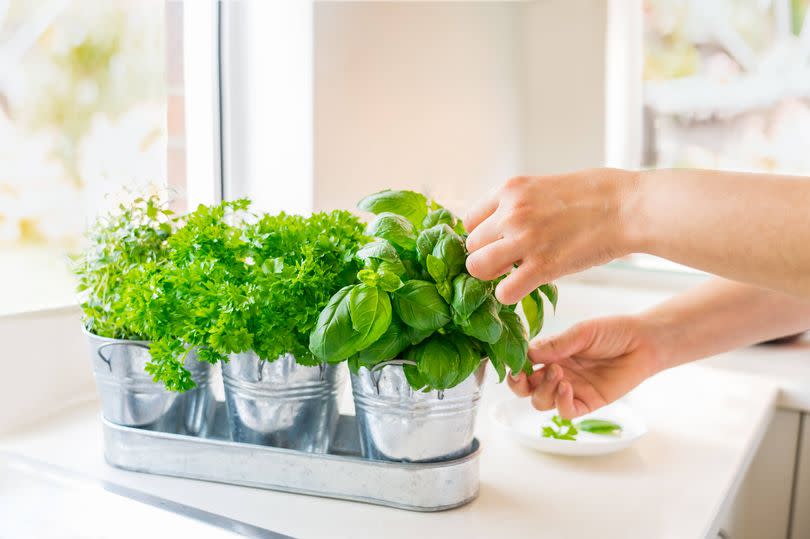Although herbs are relatively easy to care for, they can be incredibly rewarding when it comes to cooking, and a sprinkle of fresh basil or parsley can quickly transform a dish.
Making your own herb garden is a straightforward process, too, and you can even start with a pot of fresh herbs from the supermarket.
However, most plants sold in supermarkets are often lots of little plants packed together and sold as one. Taking the time to separate these and repot them in your garden can ensure you get more for your money and from your herbs.
READ MORE: Morgan Gibbs-White hopes, vacancy opens up, contract calls – Nottingham Forest transfer stock take
READ MORE: Nottingham Forest transfer talks confirmed as director of football addresses contract situation
But there’s one other task you should be keeping up with to ensure you get the most from homegrown basil, parsley or mint.
Heading out to the garden to pick a few leaves to cook with, and forgetting to give them a proper prune, can quickly ruin your plants.
One gardener has shared how to effectively prune herbs to prevent them from becoming woody and stalky, and instead guarantee a full harvest all summer long.
In a video posted on TikTok, Lee Bestall, who runs the account @thenortherngardener, said there’s one trick gardeners should know when it comes to getting the most out of herbs this summer.
Like any plant, herbs need to be pruned, but he warned gardeners not to do one thing to ensure plants are full of leaves and flavour.
“Here’s the trick: don’t just pick the tops. If you only ever snip the soft tips for cooking, you’ll end up with leggy, straggly stems that look sad and taste worse,” he explained.

Fresh herbs need to be pruned correctly for them to grow back bigger -Credit:undefined via Getty Images
While it may be tempting to leave herbs alone once they’ve bloomed, Lee warns against it as the plants risk becoming stalky and flowering.
Many herb plants produce flowers, but once they do, they lose their culinary value and can no longer be used for cooking.
It can be daunting cutting full herb plants back, but Lee urges gardeners to be “bold” in pruning.
Although you likely only need “those beautiful new tips” for cooking, Lee emphasises the importance of cutting back the plant regularly to maintain a bountiful harvest.
Lee’s advice for proper pruning is to “take off what you need to use as herbs but also cut back quite hard, almost to ground level”.
By repeating this process all summer, Lee assures that new foliage will sprout quickly, preventing the herbs from becoming woody and stalky, and ensuring they “taste good all season”.

